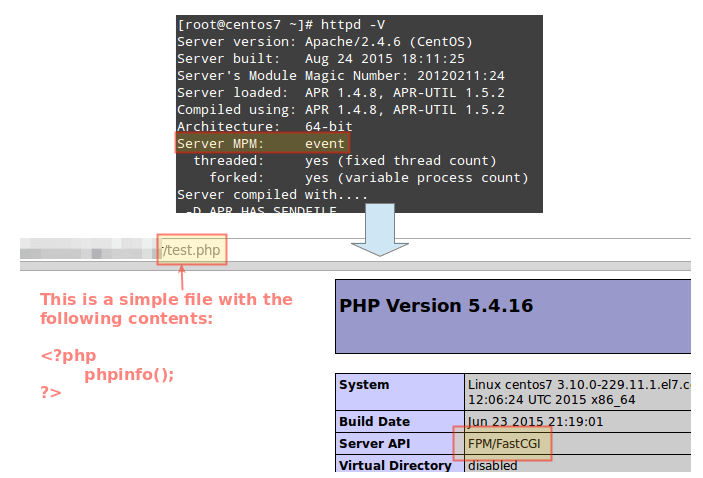 To see active connections and performance of Apache server Status module can be used. A HTML page will be presented that gives the current server statistics in an easily readable form. If required this page can be made to automatically refresh (given a compatible browser). Another page gives a simple machine-readable list of the current server state.
To see active connections and performance of Apache server Status module can be used. A HTML page will be presented that gives the current server statistics in an easily readable form. If required this page can be made to automatically refresh (given a compatible browser). Another page gives a simple machine-readable list of the current server state.
The details given are:
- The number of worker serving requests
- The number of idle worker
- The status of each worker, the number of requests that worker has performed and the total number of bytes served by the worker (*)
- A total number of accesses and byte count served (*)
- The time the server was started/restarted and the time it has been running for
- Averages giving the number of requests per second, the number of bytes served per second and the average number of bytes per request (*)
- The current percentage CPU used by each worker and in total by Apache (*)
- The current hosts and requests being processed (*)
The lines marked “(*)” are only available if ExtendedStatus is On.
Enable Apache Status Support
To enable status reports only for browsers from the example.com domain add this code to your httpd.conf configuration file
|
1 2 3 4 5 |
SetHandler server-status Order Deny,Allow Deny from all Allow from .example.com |
You can now access server statistics by using a Web browser to access the page http://your.server.name/server-status
Automatic Updates for Apache Server Status Page
You can get the status page to update itself automatically if you have a browser that supports “refresh”. Access the page http://your.server.name/server-status?refresh=N to refresh the page every N seconds.
Machine Readable Status File
A machine-readable version of the status file is available by accessing the page http://your.server.name/server-status?auto. This is useful when automatically run, see the Perl program in the /support directory of Apache, log_server_status.
It should be noted that if mod_status is compiled into the server, its handler capability is available in all configuration files, including per-directory files (e.g., .htaccess). This may have security-related ramifications for your site.






